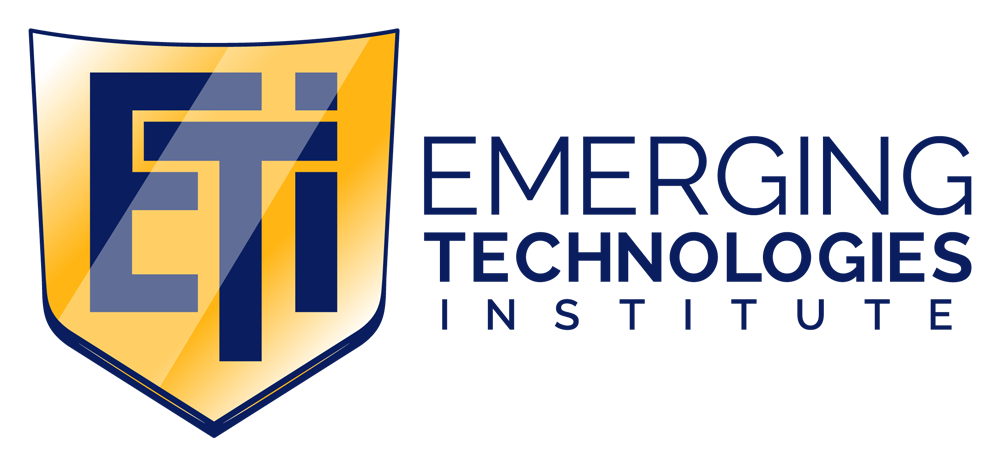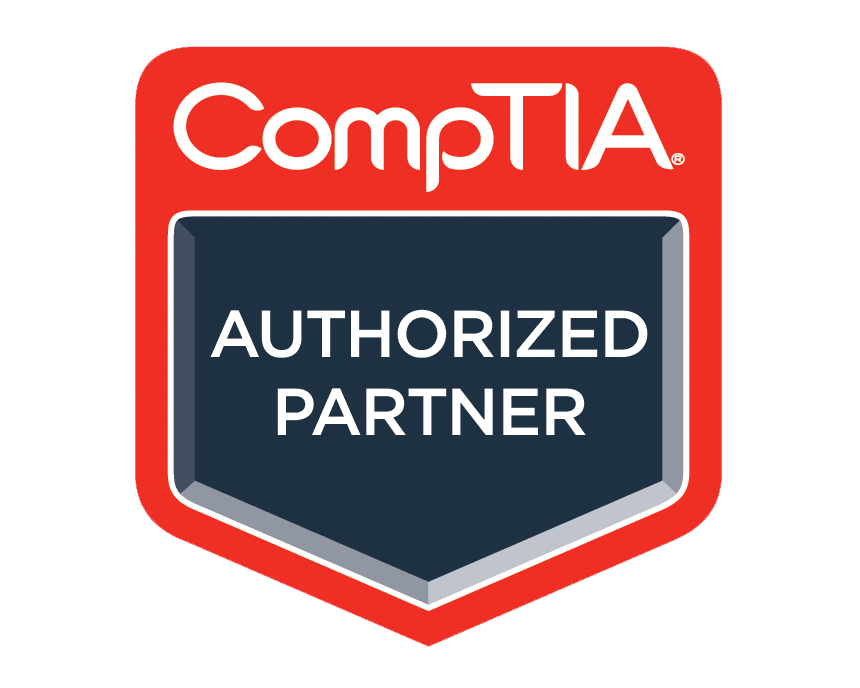IT-TIAA01
CompTIA A+220-1101 & A+220-1102
Certification Exam Prep with vouchers
About the Program
The Computing Technology Industry Association (CompTIA) is a leading voice and advocate for the $5 trillion global information technology ecosystem; and the estimated 75 million industry and tech professionals who design, implement, manage and safeguard the technology that powers the world’s economy.
This CompTIA online training program is designed to develop the skills needed for a successful career in IT. A+ is a starting point to learn foundational IT skills across a variety of devices and operating systems.
A+ 220-1101/220-1102
CompTIA A+ is the industry standard for establishing a career in IT. It is the only industry recognized credential with performance testing to prove pros can think on their feet to perform critical IT support tasks. CompTIA A+ is trusted by employers around the world to identify the go-to person in end point management & technical support roles. CompTIA A+ appears in more tech support job listings than any other IT credential.
-
The CompTIA A+ Core Series requires candidates to pass two exams: Core 1 (220-1101) and Core 2 (220-1102) covering the following new content, emphasizing the technologies and skills IT pros need to support a hybrid workforce.
Increased reliance on SaaS applications for remote work
More on troubleshooting and how to remotely diagnose and correct common software, hardware, or connectivity problems
Changing core technologies from cloud virtualization and IoT device security to data management and scripting
Multiple operating systems now encountered by technicians on a regular basis, including the major systems, their use cases, and how to keep them running properly
Reflects the changing nature of the job role, where many tasks are sent to specialized providers as certified personnel need to assess whether it’s best to fix something on site, or to save time and money by sending proprietary technologies directly to vendors
-
Help Desk Technician
Field Service Technician
Associate Network Engineer
Junior Systems Administrator
Desktop Support Specialist
System Support Technician
-
CompTIA A+ 220-1101 (Core 1) and 220-1102 (Core 2)
Candidates must complete both 1101 and 1102 to earn certification. Exams cannot be combined across the series.
Exam Launch Date: April 22, 2022
CompTIA A+ 220-1101 covers mobile devices, networking technology, hardware, virtualization and cloud computing.
CompTIA A+ 220-1102 covers operating systems, security, software and operational procedures.
Maximum of 90 questions per exam
90 Minutes
Passing Scores:
220-1101: 675 (on a scale of 900)
220-1102: 700 (on a scale of 900)
Recommended Experience: 9 to 12 months hands-on experience in the lab or field
CompTIA Training with the MyCAA Scholarship
What’s Included?
2 Exam Vouchers
E-books
Virtual practice labs
Mentor Support
Practice Exam
This is an online, self-paced program. Self-paced programs create a unique learning experience that allows students to learn independently and at a pace that best suits them.
Total Duration: 8 Weeks
Coursework must be completed by the scheduled end date, per MyCAA guidelines. Students will have access to the course materials for one year.
Tuition: $1,694
Course Breakdown
-
1.0 Mobile Devices
Install and configure laptop hardware and components
Compare and contrast the display components of mobile devices
Set up and configure accessories and ports of mobile devices
Configure basic mobile-device network connectivity and application support
2.0 Networking
Compare and contrast Transmission Control Protocol (TCP) and User Datagram Protocol (UDP) ports, protocols, and their purposes
Compare and contrast common networking hardware
Compare and contrast protocols for wireless networking
Summarize services provided by networked hosts
Given a scenario, install and configure basic wired/wireless small office/home office (SOHO) networks
Compare and contrast common network configuration concepts
Compare and contrast Internet connection types, network types, and their features
- Given a scenario, use networking tools
3.0 Hardware
Explain basic cable types and their connectors, features, and purposes
Given a scenario, install the appropriate RAM
Given a scenario, select and install storage devices
Given a scenario, install and configure motherboards, central processing units (CPUs), and add-on cards
Given a scenario, install or replace the appropriate power supply
Given a scenario, deploy and configure multifunction devices/ printers and settings
Given a scenario, install and replace printer consumables
4.0 Virtualization and Cloud Computing
Summarize cloud-computing concepts
Summarize aspects of client-side virtualization
5.0 Hardware and Network Troubleshooting
Given a scenario, apply the best practice methodology to resolve problems
Given a scenario, troubleshoot problems related to motherboards, RAM, CPU, and power
Given a scenario, troubleshoot and diagnose problems with storage drives and RAID arrays
Given a scenario, troubleshoot video, projector, and display issues
Given a scenario, troubleshoot common issues with mobile devices
Given a scenario, troubleshoot and resolve printer issues
Given a scenario, troubleshoot problems with wired and wireless networks
-
1.0 Operating Systems
Compare and contrast common operating system types and their purposes
Compare and contrast features of Microsoft Windows versions
Summarize general OS installation considerations and upgrade methods
Given a scenario, use appropriate Microsoft command line tools
Given a scenario, use Microsoft operating system features and tools
Given a scenario, use Microsoft Windows Control Panel utilities
Summarize application installation and configuration concepts
Given a scenario, configure Microsoft Windows networking on a client/desktop
Given a scenario, use features and tools of the Mac OS and Linux client/desktop operating systems
2.0 Security
Summarize the importance of physical security measures
Explain logical security concepts
Compare and contrast wireless security protocols and authentication methods
Given a scenario, detect, remove, and prevent malware using appropriate tools and methods
Compare and contrast social engineering, threats, and vulnerabilities
Compare and contrast the differences of basic Microsoft Windows OS security settings
Given a scenario, implement security best practices to secure a workstation
Given a scenario, implement methods for securing mobile devices
Given a scenario, implement appropriate data destruction and disposal methods
Given a scenario, configure security on SOHO wireless and wired networks
3.0 Software Troubleshooting
Given a scenario, troubleshoot and resolve printer issues
Given a scenario, troubleshoot and resolve PC security issues
Given a scenario, use best practice procedures for malware removal
Given a scenario, troubleshoot mobile OS and application issues
Given a scenario, troubleshoot mobile OS and application security issues
4.0 Operational Procedures
Compare and contrast best practices associated with types of documentation
Given a scenario, implement basic change management best practices
Given a scenario, implement basic disaster prevention and recovery methods
Explain common safety procedures
Explain environmental impacts and appropriate controls
Explain the processes for addressing prohibited content/ activity, and privacy, licensing, and policy concepts
Given a scenario, use proper communication techniques and professionalism
Identify the basics of scripting
Given a scenario, use remote access technologies



